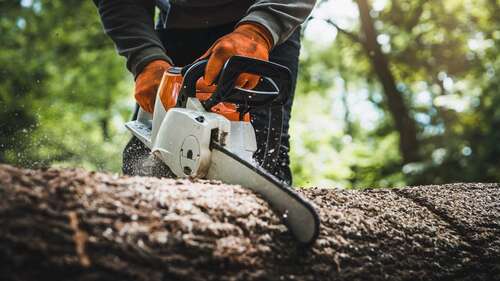
While it might be tempting to set the tool aside following a big project, you should consider cleaning and draining the fuel first(gasoline-powered version), especially if you don’t plan on using it for a while. The chain can easily become plugged with debris, and a dirty chain dulls quickly. For your next project, you don’t want to start cutting with a dull chain as the threat of kickback becomes more likely. According to the CDC, around 36,000 people are hospitalized yearly due to a chainsaw incident. Luckily, disconnecting the chain from the bar is straightforward and consists of loosening and removing two nuts on the side of the unit that hold the bar in place.
Then you can follow these steps for cleaning:
- Soak the chain in degreaser.
- Use a brush to scrub away grime.
- Clean out the oiler holes on the bar with compressed air or a small pointed tool.
- Remember to apply bar oil to the chain before using.
To ensure safe storage, you can leave the chain and bar disconnected from the unit until you’re ready to use the chainsaw again. If you’re unsure when you’ll use the tool again, you should drain the fuel and run the unit dry (gasoline-powered version). Fuel ages quickly and can clog components in the chainsaw’s engine. If you’re curious about battery-powered cutting tools, learn who has the better electric chainsaw between two big manufacturers, Husqvarna and Ryobi.

